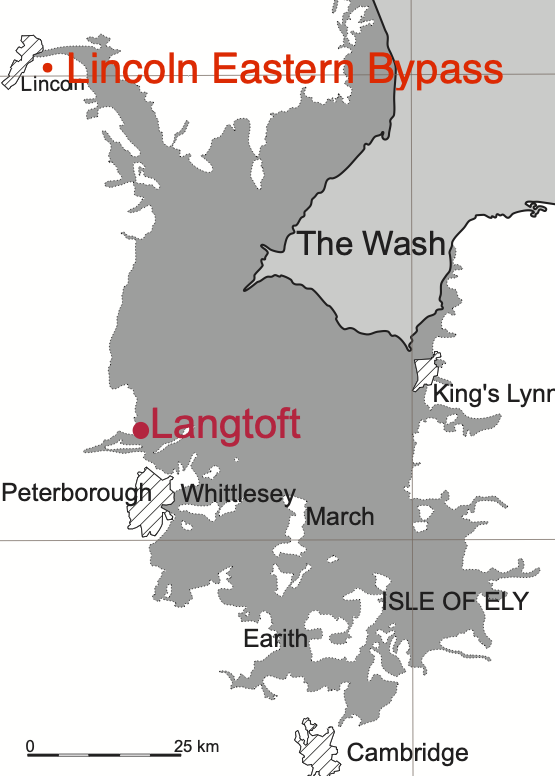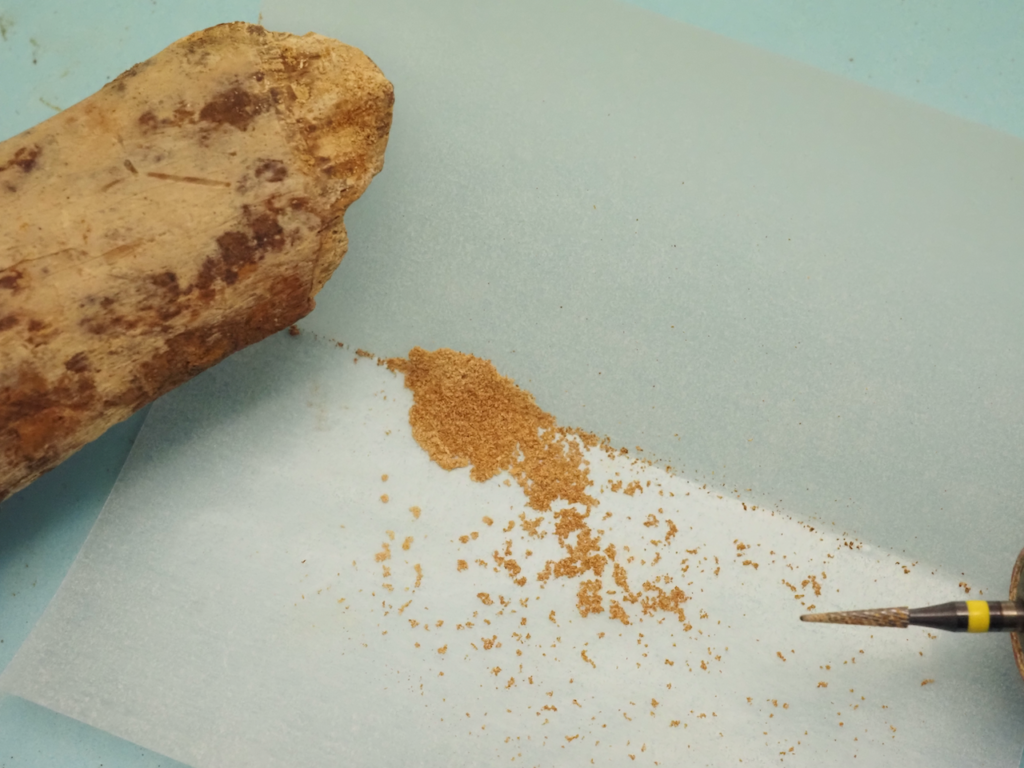Research by David Osborne, Dept of Classics & Archaeology, University of Nottingham
d.osborne@nottingham.ac.uk
Introduction
My PhD research focuses on the mobility of people and their animals in Lincolnshire and the fens during the Neolithic and Early Bronze Age, that is, from about 3000 BCE to about 1500 BCE. What are the issues in approaching mobility and movement in the past? The material remains to which we have access are themselves static, stationary objects, yet from them we need to infer how they, as well as the people who used or created them, moved as part of their lived experience. The difficulty that this implies has surely contributed to mobility receiving little attention in archaeology until recently and mobility has been identified as one of the “grand challenges” to archaeology (Kintigh et al. 2014). However, by including movement and mobility in our research, the past we study becomes animated and inhabited, rather than stationary and static.
Where?
Animal teeth and bones provide the material for analysis, as they are more plentifully available than human remains and, following the ‘turn to posthumanism’ in the Humanities, we can consider human and non-human animals as co-constituting the communities of which they are part. These remains were excavated from two groups of sites which are dated to the early Bronze Age, between 2200–1500 BCE, approximately. From the Welland valley to the east of Lincoln, along the path of the new Lincoln Eastern Bypass, cattle, sheep and pig bones and teeth were excavated from several sites near the River Welland. These will be compared with similar
remains from a number of sites excavated in advance of gravel extraction to the east of Langtoft, located further south on what would have been dry land beside the fen salt-marshes (Figure 1).

Figure 1: Sites providing animal bones for analysis
When?
Across much of lowland Britain, later Neolithic domestic sites show little evidence of permanent settlement, often consisting of little more than scatters of lithic fragments from flint working and numbers of pits containing animal bones, pottery and flints. There are exceptions, such as part of a possible house structure at Tattershall Thorpe in Lincolnshire and a possible house or mortuary structure at Fengate, but these are rare (Chowne et al. 1993; Pryor 1974). However, the general lack of evidence for permanent houses suggests that Neolithic communities were mobile, perhaps moving at intervals between particular places in a manner which has been called ‘tethered mobility’ (Whittle 1997).
Excavations near Peterborough at the important fen-edge site of Fengate revealed an extensive complex of ditches marking field systems dating to the Bronze Age. Parallel ditches defining ‘droveways’ between the fields are assumed to have been for moving either sheep or cattle to and from the fen salt-marsh for summer grazing (Evans 2009; Pryor 1980). By the time of the middle Bronze Age, the evidence for individual farmsteads and associated field systems such as those at Fengate and Langtoft suggests that communities of people and their animals were much more settled.
How?
Methods of chemical and physical analysis allow us to extract information from teeth and bones relating to diet and location. Stable isotopes of carbon and nitrogen (13C, 15N) which can be detected in bone collagen record information about the diet of the animal, while increased amounts of an isotope of sulphur (34S) can indicate grazing on salt-marsh plants. Isotopes of strontium (87Sr/86Sr) in tooth enamel can be used to infer movement over longer distances from areas with a different geology.
Stable isotope analysis of the teeth and bones of cattle, sheep and pigs from both Lincoln and Langtoft will be used to explore the diet of animals at these locations and the associated husbandry practices. As a first step, bulk samples of powder abraded from the cleaned surfaces of bones is being analysed by mass spectrometry to detect the percentage of nitrogen present, as an indicator of the preservation of bone collagen (Figure 2). To explore the use of droveways for the movement of cattle and sheep, X-ray Fluorescence spectrometry (XRF) analysis of soil samples from transects across a proposed droveway at Langtoft will supplement the stable isotope data by providing information on elemental concentrations including phosphorus from animal dung.

Figure 2: Bulk sampling of cattle bone to assess collagen preservation
Acknowledgements
My research is supported by an AHRC Midlands4Cities studentship and I am grateful for a generous grant from the committee for the NERC Environmental Isotope Facility to fund the isotope analysis. Thanks also go to my supervisors, Professor Hannah O’Regan (University of Nottingham) and Dr Oliver Harris (University of Leicester), as well as our co-investigators, Dr Angela Lamb and Professor Jane Evans at British Geological Survey, Keyworth. The analysis of the faunal remains would not have been possible without the assistance of Dr Marcus Brittain and Dr Emily Banfield at Cambridge Archaeological Unit and Diana Fernandes and colleagues at Network Archaeology, Lincoln.
References
Chowne, P., F. Healy and R. Bradley (1993) The excavation of a Neolithic settlement at Tattershall Thorpe, Lincolnshire. In: Bradley, R., P. Chowne, R. M. J. Cleal, F. Healy and I. Kinnes. Excavations on Redgate Hill, Hunstanton, Norfolk, and at Tattershall Thorpe, Lincolnshire. East Anglian Archaeology 57. Sleaford: Heritage Trust for Lincolnshire, 79–124.
Evans, C. (2009) Fengate Revisited: Further fen-edge excavations, Bronze Age fieldsystems & settlement and the Wyman Abbott/Leeds archives. CAU Landscape Archives: Historiography and Fieldwork (1). Cambridge: Cambridge Archaeological Unit.
Kintigh, K. W. et al. (2014) Grand Challenges for archaeology. American Antiquity 79 (1), 5–24. doi: 10.7183/0002-7316.79.1.5.
Pryor, F. (1974) Excavation at Fengate, Peterborough, England: The First Report. Archaeological Monograph 3. Toronto: Royal Ontario Museum. url: https://archive.org/details/excavationatf00pryo (visited on 17/10/2017).
Pryor, F. (1980) Excavation at Fengate, Peterborough, England: The Third Report. Royal Ontario Museum Archaeology Monograph 6 and Northamptonshire Archaeological Society Monograph 1, Toronto: Royal Ontario Museum. url: https://archive.org/details/excavationatfen00pryo (visited on 11/05/2018).
Whittle, A. (1997) Moving on and moving around: Neolithic settlement mobility. In: Neolithic Landscapes. Edited by P. Topping. Neolithic Studies Group Seminar Papers 2. Oxford: Oxbow, 15–22.